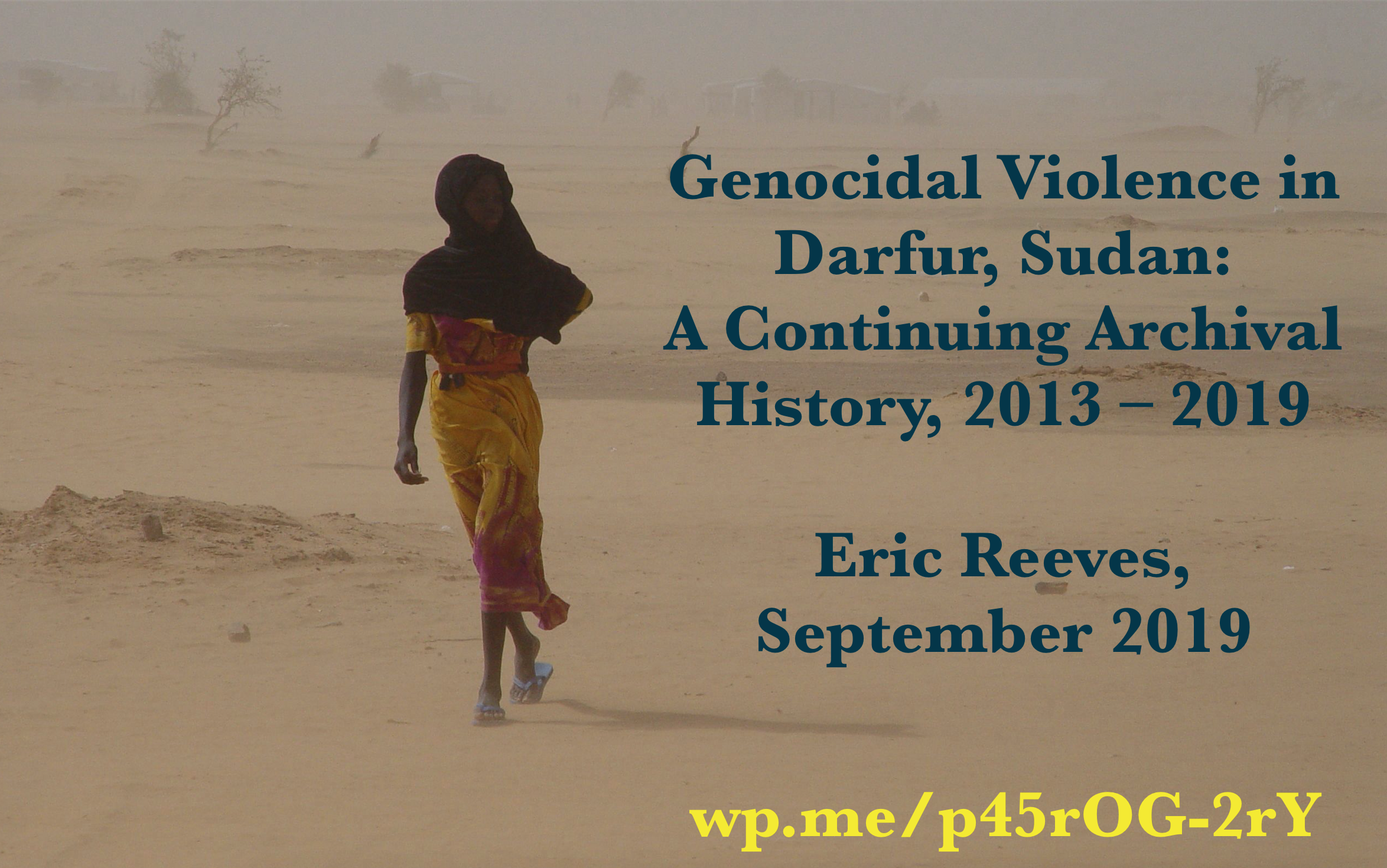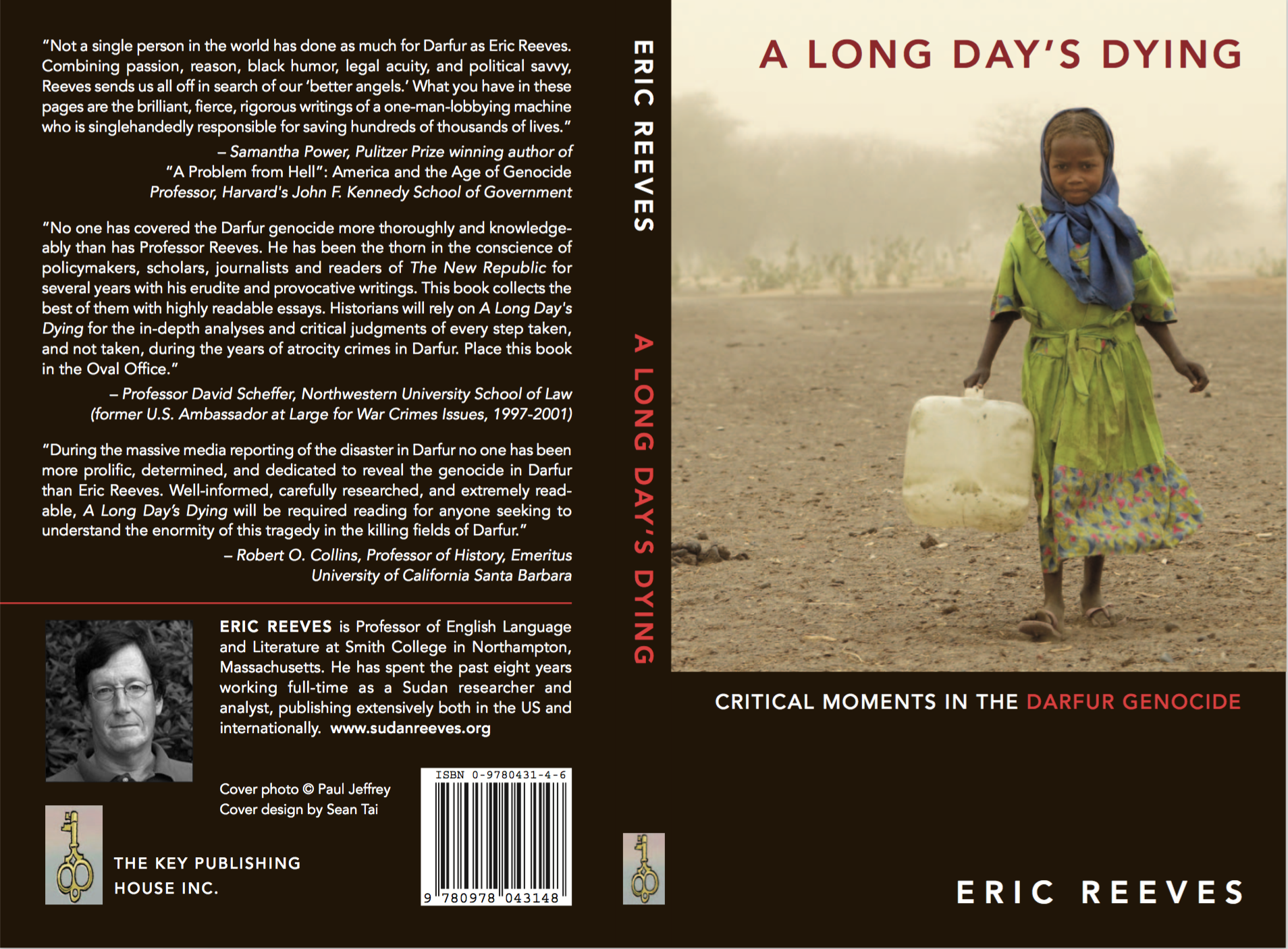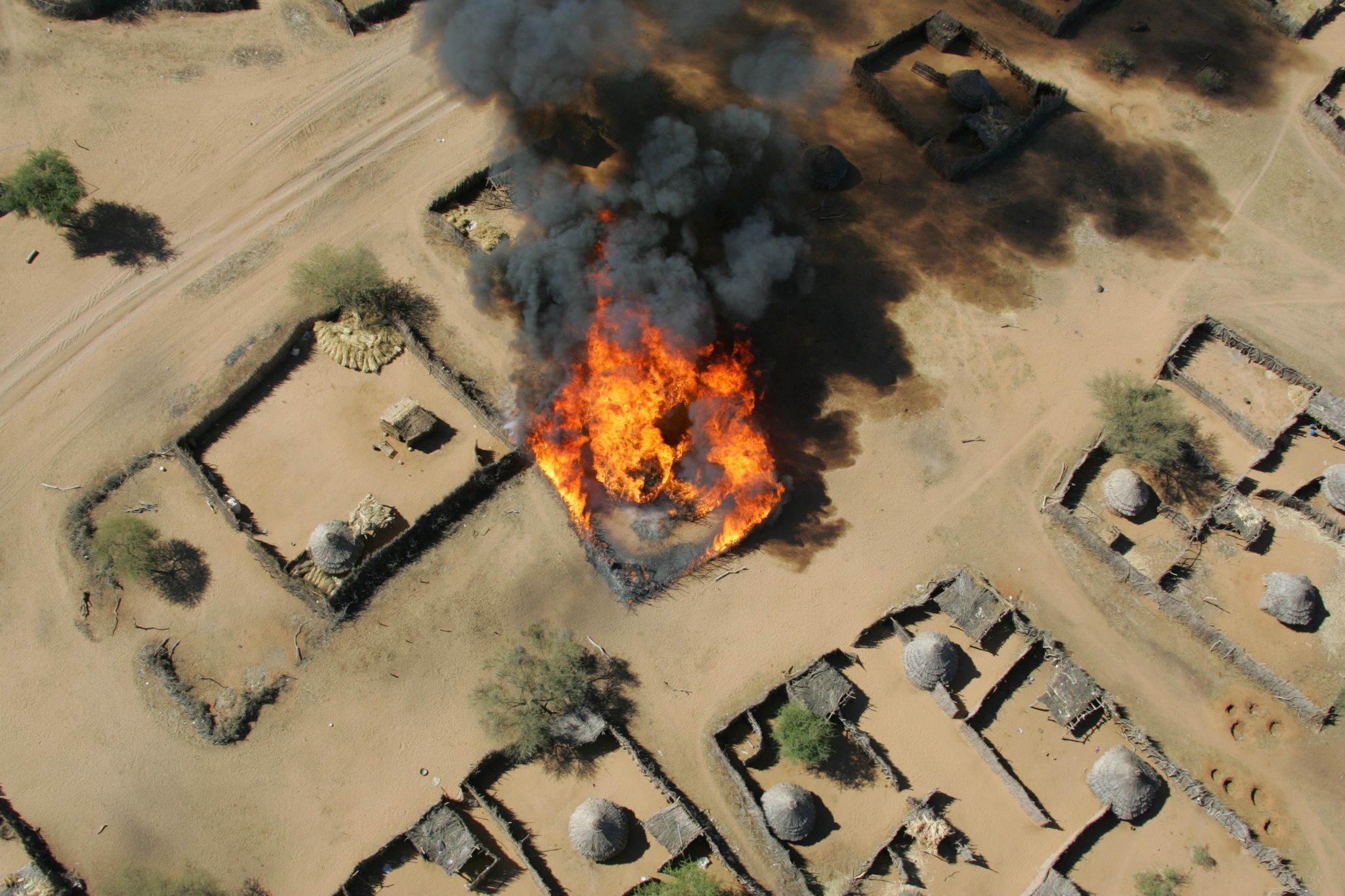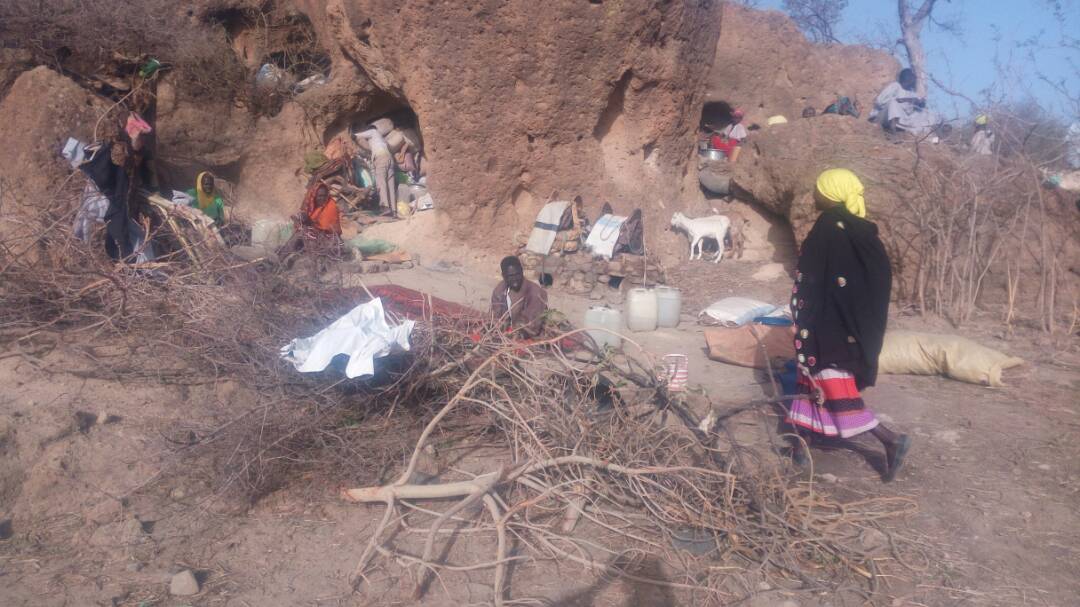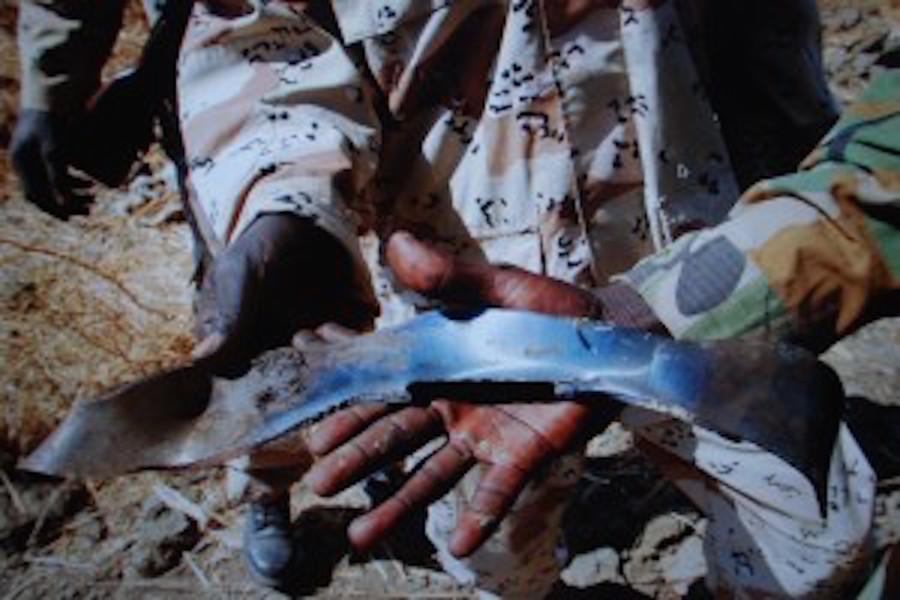Genocidal Violence in Darfur, Sudan: A Continuing Archival History, 2013 – 2019
Eric Reeves, September 2019 | https://wp.me/p45rOG-2rY
Introduction
This third “volume” in what has been a continuing archival history of violence in Darfur is almost certainly the last, although this does not signify that violence—brutal, ethnically-targeted violence—has ended in Darfur, however much this “end” has been proclaimed, directly and indirectly, by a wide range of international actors. These include in particular high-ranking officials from the United Nations and African Union who have scrambled with shocking dishonesty to proclaim that the “hybrid” UN/AU Mission in Darfur (UNAMID) has in some sense halted the major violence. It has not, and the most recent monograph included in this volume gives a detailed account of violence from January 2017 to March 2019.
As a “volume”–in some sense an “e-Book”–the present effort comprises four monographs devoted entirely to violence in Darfur—overwhelmingly against non-Arab Darfuri civilians—and the relevant data and analysis from a fifth monograph that examined in detail the aerial bombardment of civilian and humanitarian sites by the military forces of the now deposed al-Bashir regime. Monographs are presented by way of their executive summaries and the respective links to analysis, data, and data mapping that reveal the extent and geographic concentrations of violence in Darfur. (Collectively, the five monographs exceed 60,000 words and include as well a number of lengthy appendices and data spreadsheets; they are distilled here—by way of summary and links—to about 7,500 words.)
There has been no comparable effort to present a comprehensive account of violence in Darfur over the past seven years, let alone the past sixteen years. The spate of books that appeared while Darfur was a focus of international attention, no matter how well historically informed when they first appeared, are now seriously out of date. While there have been several extremely important human rights reports on this violence, the last appeared in September 2016 and focused sharply on the brutal military offensive of that year against Jebel Marra, conducted primarily by the Rapid Support Forces of Lt. General Hamdan Dagalo (hereafter “Hemeti”). The Amnesty International report (“Scorched Earth, Poisoned Air: Sudanese Government Forces Ravage Jebel Marra, Darfur,” September 26, 2016) established authoritatively the utter ruthlessness and savagery of this offensive, targeting as it did civilians in the last major redoubt of the forces of the most resistant of the rebel groups, the Sudan Liberation Movement/Army of Abdel Wahid al-Nur.
In particular, Amnesty provided fully compelling evidence that chemical weapons were used in this military offensive, including against civilians nowhere near rebel combatants. The complete international silence over the use of chemical weapons stood in stark contrast to the outrage that had been expressed previously over the use of such weapons by the Assad regime in Syria. In this sense, international silence was all too representative of the how the world has responded to broader military violence against civilians in Darfur.
Exposing the disingenuousness and outright dishonesty of the international community in responding to what was once unhesitatingly referred to as “genocide” in Darfur is the primary ambition of this systematic collection of data and analyses. It is in most ways the same ambition animating my two previous books on Darfur—and what I call “greater Sudan,” this by way of noting the continuity of ambitions by the al-Bashir regime in South Sudan and the “Two Areas” that are now the southernmost parts of Sudan: South Kordofan and Blue Nile.
The conflict that broke out in summer 2011—eight years ago—has taken a tremendous human toll, both in destruction and vast suffering caused by both displacement and deprivation. A humanitarian embargo on rebel-controlled areas of South Kordofan and Blue Nile (i.e., the areas controlled by the Sudan Peoples Liberation Movement/Army-North) has been in place since the early months of the fighting that began in June 2011 in South Kordofan, and the international community has been unwilling to exert the pressure necessary to produce a lifting of the embargo, despite desperate humanitarian needs.
PREVIOUS PUBLICATIONS
My two previous books cover sequential periods in Darfur, 2002 – 2006 and 2007 – 2012:
• A Long Day’s Dying: Critical Moments in the Darfur Genocide (Key Publishing, Toronto | 2007) http://www.sudanreeves.org/Article285.html
• Compromising with Evil: An Archival History of Greater Sudan, 2007 – 2012, Eric Reeves, author; Madeleine Zehnder, research and editing (e-Book and review commentary at www.CompromisingWithEvil.org) and http://sudanreeves.org/2013/08/30/compromising-with-evil-an-archival-history-of-sudan-2007-2012-commentary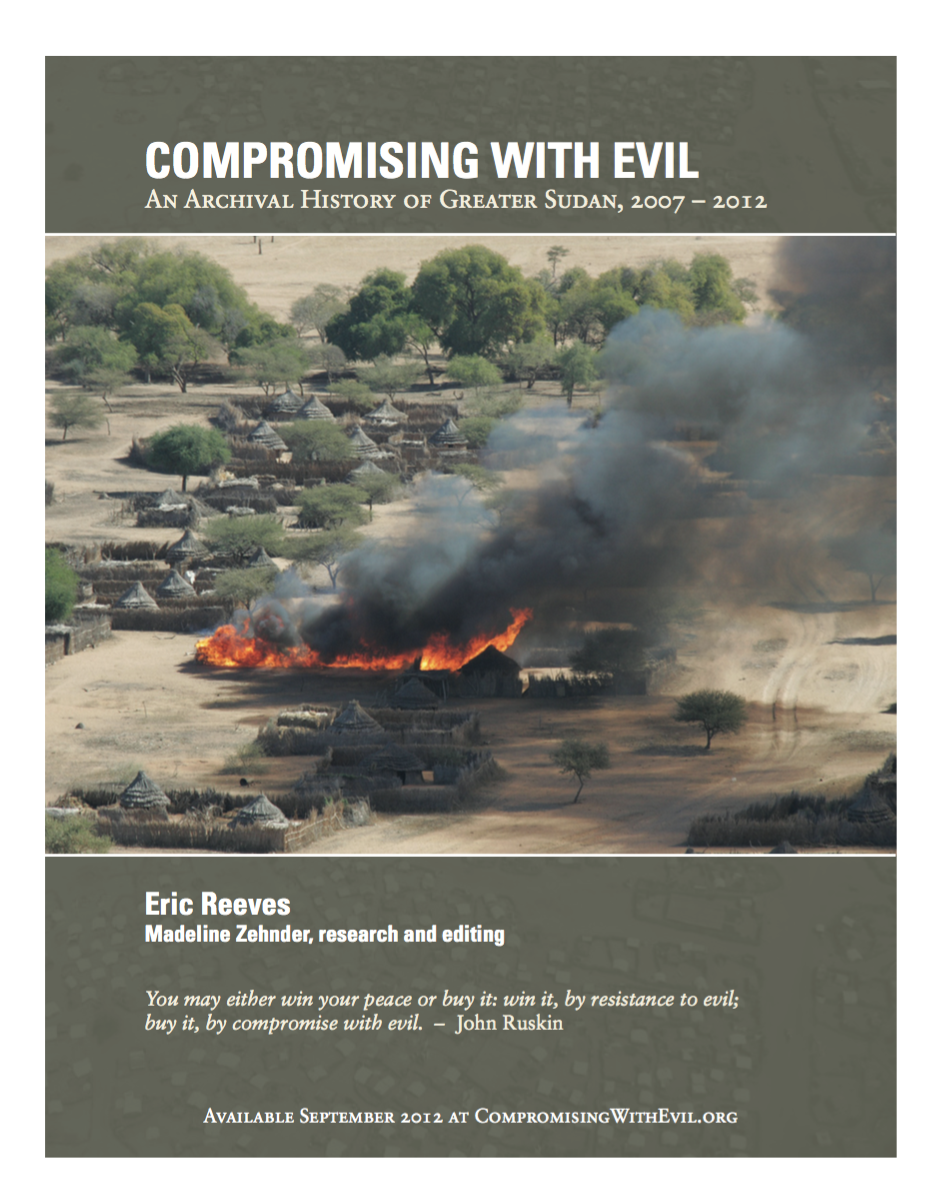 I have continued to publish regularly since the on-line release of the latter, both on on my website and in national and international news venues (including The New York Times and The Washington Post), as well as in academic journals. Some of these have been translated into Arabic. All publications (as well as broadcast interviews, Congressional testimony, and academic presentations) may be found at | http://sudanreeves.org/2011/01/29/sudan-publications-testimony-and-academic-presentations/ .
I have continued to publish regularly since the on-line release of the latter, both on on my website and in national and international news venues (including The New York Times and The Washington Post), as well as in academic journals. Some of these have been translated into Arabic. All publications (as well as broadcast interviews, Congressional testimony, and academic presentations) may be found at | http://sudanreeves.org/2011/01/29/sudan-publications-testimony-and-academic-presentations/ .
Collected in this “volume,” then, are the essential elements of four monographs specifically on Darfur and a fifth that gives a detailed account of aerial targeting of civilians throughout Sudan, including Darfur, by the al-Bashir regime. They are:
• “‘Changing the Demography’: Violent Expropriation and Destruction of Farmlands in Darfur, November 2014 – November 2015,” Eric Reeves, author; Maya Baca, research and editing. December 1, 2015 | http://wp.me/p45rOG-1P4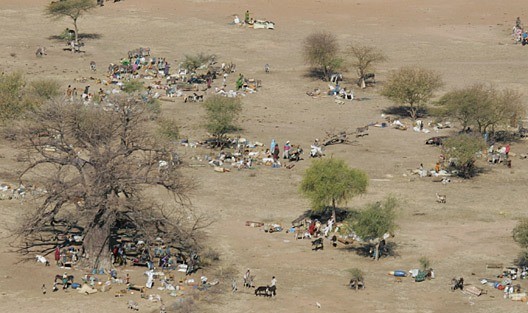
Newly displaced non-Arab farmers near the Chad/Darfur border, 2015; refugees in eastern Chad refuse to return to a violence-torn Darfur
Destruction in Darfur in the period following the creation of the Rapid Support Forces in 2013 has often been as barbaric as that of the early years of the genocide
• “Continuing Mass Rape of Girls in Darfur: The most heinous crime generates no international outrage,” January 2016, Eric Reeves, author; Maya Baca, research and editing | http://wp.me/p45rOG-1QG
[Arabic translation of this report | http://wp.me/p45rOG-1Rr ]
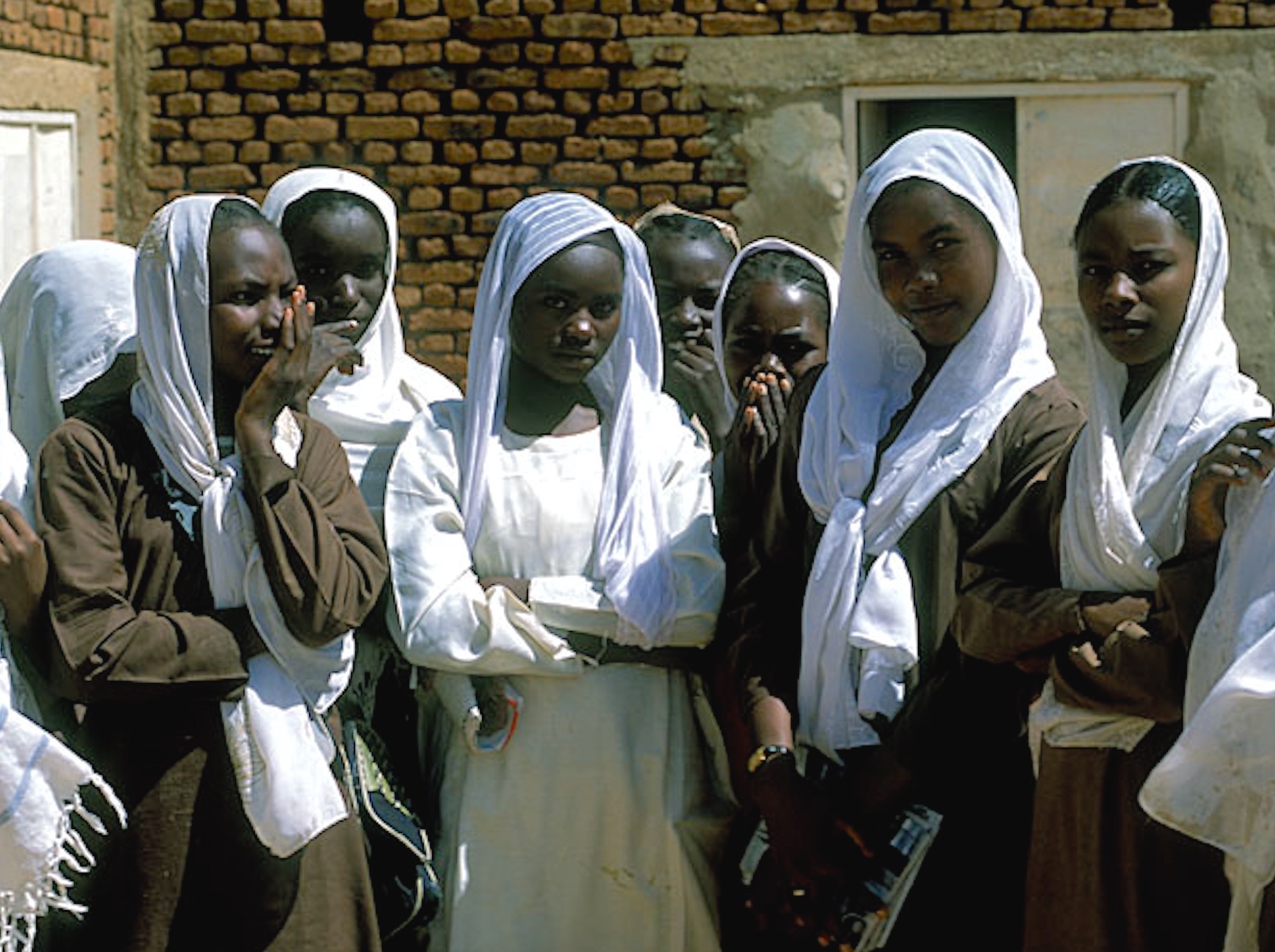
Non-Arab girls are a primary target of the sexual violence that has defined the Darfur genocide since 2003
• “UNAMID Withdrawal and International Abandonment: Violence in Darfur 2017 – 2019, a statistical analysis,” Eric Reeves, author; Maya Baca, research, data collection, and editing, May 20, 2019 | https://wp.me/p45rOG-2qm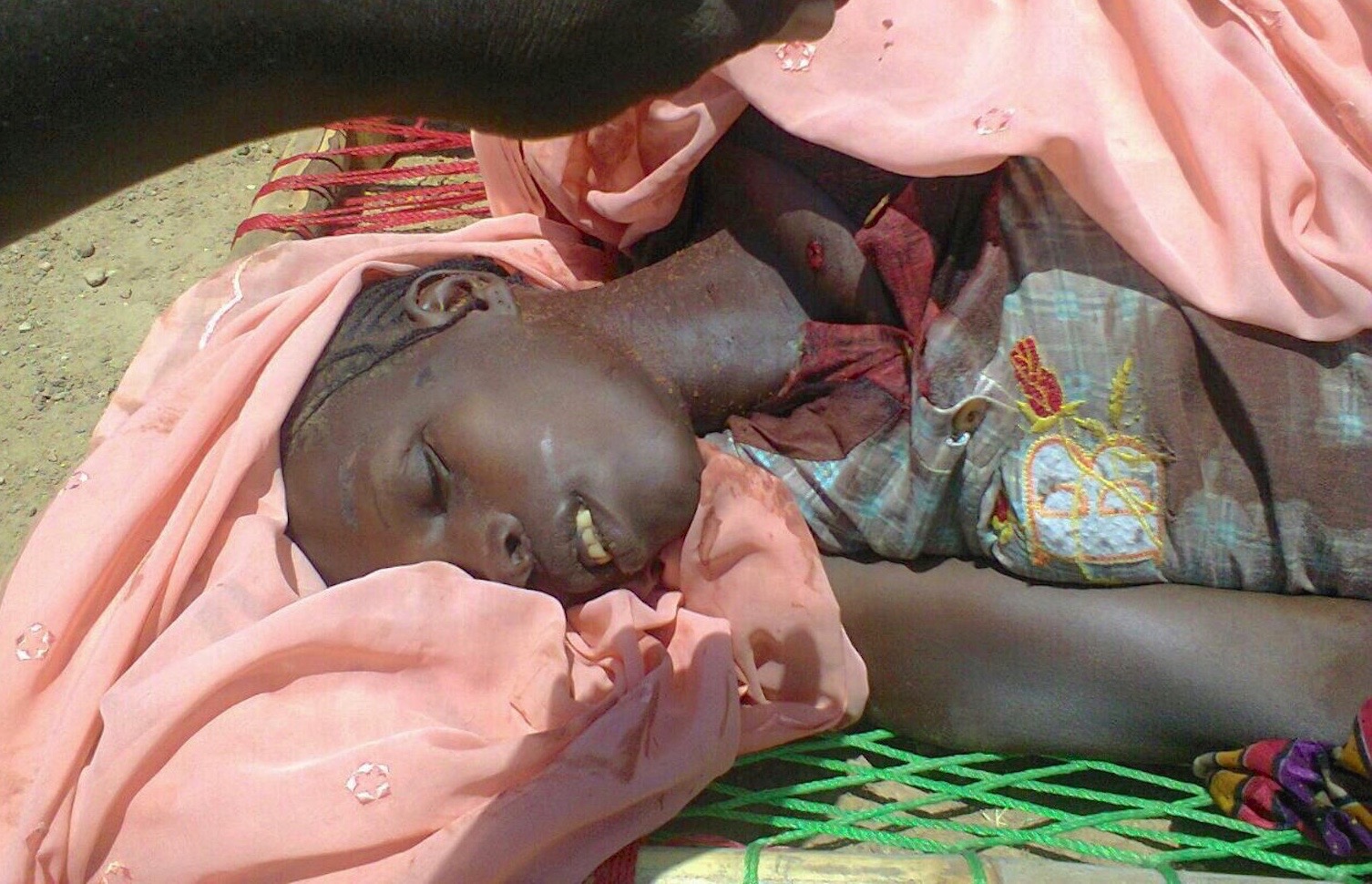
Victim of another brutal militia assault on Kalma IDP camp (near Nyala, South Darfur, September 2017
Many of those displaced by violence in Darfur still cannot reach IDP camps or access international humanitarian assistance (April 2017)
• “QUANTIFYING GENOCIDE: Darfur Mortality Update, 6 August 2010” (updated November 2016), research and statistical analysis by Eric Reeves, August 6, 2010 | http://wp.me/p45rOG-AB
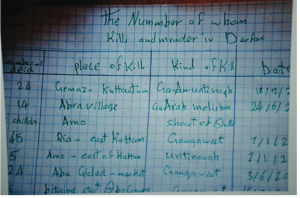 Crude efforts by Darfuri refugees, using phonetically transliterated Arabic into English, attempting to keep track of violent deaths in Darfur (2007)—no one else seemed to take the issue seriously
Crude efforts by Darfuri refugees, using phonetically transliterated Arabic into English, attempting to keep track of violent deaths in Darfur (2007)—no one else seemed to take the issue seriously
• “‘They Bombed Everything that Moved’: Aerial military attacks on civilians and humanitarians in Sudan, 1999 – 2011” (data updated as of June 2012); research and analysis by Eric Reeves, May 6, 2011 | http://wp.me/s45rOG-7566
Crude shrapnel-loaded barrel bombs have been the primary weapon in aerial warfare by the Khartoum regime; useless again real military targets, they are exquisitely suited for civilian terror and destruction, able easily to kill and maim those without hardened shelters or underground bunkers
Crucial in producing the first two of these monographs were three human rights reports, two from Human Rights Watch and the report from Amnesty International previously referred:
• “Scorched Earth, Poisoned Air: Sudanese Government Forces Ravage Jebel Marra, Darfur,” Amnesty International, September 26, 2016 | https://www.amnestyusa.org/reports/scorched-earth-poisoned-air-sudanese-government-forces-ravage-jebel-marra-darfur
• “‘Men With No Mercy’: Rapid Support Forces Attacks Against Civilians in Darfur, Sudan,” Human Rights Watch, September 9, 2015 | https://www.hrw.org/report/2015/09/09/men-no-mercy/rapid-support-forces-attacks-against-civilians-darfur-sudan
• “Mass Rape in North Darfur: Sudanese Army Attacks against Civilians in Tabit,” Human Rights Watch, February 11, 2015 | https://www.hrw.org/report/2015/02/11/mass-rape-north-darfur/sudanese-army-attacks-against-civilians-tabit
Less directly relevant to my researches but still critical in understanding continuing violence in Darfur are reports from Small Arms Survey (Geneva) and Clingendael (The Netherlands):
• “Multilateral Damage: The Impact of EU Migration Policies on Central Saharan Routes,” Clingendael, September 2018 | https://www.clingendael.org/pub/2018/multilateral-damage/
• “Remote-Control Breakdown: Sudanese paramilitary forces and pro-government militias,” Small Arms Survey, April 2017 | http://www.smallarmssurveysudan.org/fileadmin/docs/issue-briefs/HSBA-IB-27-Sudanese-paramilitary-forces.pdf
The latter two reports are particularly important in understanding the implications of a transitional government in Sudan that has as one of its most powerful members Hemeti, who was deputy chief of the Transitional Military Council (dissolved August 18, 2019) and is currently one of four generals on the Sovereign Council, a body whose powers remain dangerously unclear , even with the selection of Abdallah Hamdok as Prime Minister. No one in Sudan has more Darfuri blood on his hands than Hemeti by way of his command responsibility for the continuing violent predations of the Rapid Support Forces. The RSF have been the primary actor in the continuation of the Darfur genocide since 2013.
The Future of Darfur in Sudan
As of mid-September 2019 there are distinctly encouraging signs about the move to civilian governance in Sudan. This has already translated into the appointment of Abdallah Hamdok, a distinguished economist, as Prime Minister; he is a man who clearly understands how fully the Sudanese economy has collapsed and is prepared to take the necessary steps to resuscitate it. Here, however, in addition to dealing with skyrocketing inflation, an acute shortage of hard currency for necessary imports (including food, medicine, and refined petroleum products), high unemployment and underemployment, an agricultural sector ravaged by decades of neglect, and a national infrastructure that is in tatters, Prime Minister Hamdok must confront other harsh realities. The extensive “deep state” created during the thirty years of the al-Bashir regime—a wide-ranging and complex network of corruption, party patronage, self-serving banking practices, and the buying and selling of National Islamic Front/National Congress Party favors—is an immense detriment of the economy as a whole.
Hamdok must also rein in past extraordinary devotion of national resources to the military and security services, perhaps his most difficult challenge. For the military and security service leadership has grown accustomed to its unrivaled ability to extract national resources for both personal gain and profligate expenditures, both in the form of salaries and extravagant military purchases. The willingness to purchase weapons systems like the advance Russian MiG-29 fighter aircraft is only the most conspicuous sign of expenditures that have nothing to do with national security, and—given their inordinate complexity and the challenges of pilot training and maintenance of these aircraft—are almost worthless in waging counter-insurgency warfare. Retrofitted older Antonov cargo planes, used as crude bombers for the dropping of barrel bombs on civilians and humanitarians, have been much more effective as instruments of civilian terror and destruction, especially in South Kordofan and Blue Nile since 2011.
The generals who nominally surrendered their power as the “Transitional Military Council” (TMC) with the signing of the Constitution Declaration in August are unlikely to welcome the sharp reductions in budgets of the armed forces and security services, which according to nearly all independent Sudanese economists well exceed 50 percent of the entire national budget. The military and security services have commandeered the critical resources necessary for reviving the agricultural sector, whose destruction under al-Bashir is perhaps the most lasting consequence of his regime. It has prevented available resources from restoring Sudan’s infrastructure, including roads, water systems, and the basic necessities for the functioning of towns in peripheral regions. Education, hospitals, and schools have suffered terribly during the al-Bashir regime, and one result has been a tremendous “brain drain”—the flight from Sudan of some its most talented professionals, especially in the realm of medical services.
As obvious as the need is for radical economic and budgetary reform may be, it will be difficult for Prime Minister Hamdok to secure the agreement of a watchful military; and the security services, nominally to be reformed and appropriately tasked, are close allies of the generals, preeminently General Abdel Fatah al-Burhan, head of the former TMC and now the head of the Sovereign Council, a body with executive powers that may include overruling decisions made by the Prime Minister, whether or not justified by the Constitutional Declaration.
More ominously, particularly for the future of Darfur, has been the spectacular political rise of Lt. General Hamdan Dagalo (“Hemeti”), head of the Rapid Support Forces (RSF) and a terrifyingly ambitious man, regarded by many as now the most powerful man in Sudan, given his strong support from Saudi Arabia and the Emirates as well as his position on the Sovereign Council (he was al-Burhan’s deputy on the TMC). Moreover, both al-Burhan and Hemeti have served Saudi Arabia in waging war in Yemen, a war that has been defined by atrocity crimes in which both men have participated.
In Darfur Hemeti’s RSF has been the primary instrument of ethnically-targeted violence, violence chronicled in detail in three of the monographs included in the present collection. And it is painfully clear from the continuing violence in the region, and with the withdrawal of UNAMID, that the future of Darfur will look much like the past. Encouraging negotiations in Juba (South Sudan) in September 2019 suggest that some agreement may be in the offing between the transitional government in Khartoum and the various rebel groups from Darfur, South Kordofan, and Blue Nile. Certainly Prime Minister Hamdok, who personally took part in the negotiations, understands full well the terrible costs of war, especially the civil wars continuous under the al-Bashir regime.
But it is extremely difficult to see how Hemeti will surrender Darfur, which he effectively controls through the RSF, and agree to terms that will produce not only an end to violence but provide for the enormous resources that will be required for reconstruction and compensation after sixteen years of devastation. For in a blow to the chances for real civilian governance in Sudan, the RSF exists in the Constitutional Declaration as a co-equal military branch with the regular Sudan Armed Forces. This is so despite the role of the RSF in the infamous “June 3 [2019] Massacre” and many of the other murders of demonstrators that occurred following the December 19, 2018 uprising. The RSF is in effect Hemeti’s private army, with extremely ominous implications.
Certainly no real move for accountability will be accepted by Hemeti, and any attempt to bring him to justice for the war crimes, crimes against humanity, and genocide for which he bears command responsibility in Darfur, South Kordofan, Khartoum, and other parts of Sudan will precipitate a crisis that might lead to civil war. Deference to Hemeti, in one form or another, seems to be the fate of the transitional government for the foreseeable future.
If this is so, then the violence of the RSF in Darfur will continue relentlessly. The predations of armed Arab groups and small-scale militia will continue as well. The more than 2.5 million people who remain either internally displaced or refugees in eastern Chad will continue to find returning to their homes and villages intolerably dangerous. It is encouraging that the transitional government is once again granting access to humanitarian organizations to Darfur and eastern Sudan, but it is not yet clear whether this entails lifting the humanitarian embargo imposed by the al-Bashir regime on the large rebel-controlled areas of South Kordofan and Blue Nile.
Most conspicuously, I foresee no enforceable plan that will provide security in Darfur, especially with the withdrawal of UNAMID. Ultimate power exists in the form of the threat of violence by the RSF. Similarly, I foresee no enforceable plan that will result in the returns of farms and lands to those to whom they rightly belong, or restitution for the tremendous losses incurred by the non-Arab majority in Darfur. Whether or not the IDP camps are dismantled, as the al-Bashir promised repeatedly to undertake, the people in these camps have no place to go, no homes to return to so long as the RSF remains the preeminent power in Darfur. Attempts by farmers to return have consistently been met with violence by armed Arab pastoralists; no attempt is made be either the RSF or SAF to confront this vast and ongoing threat.*
Ethnically-targeted violence seems likely to continue until the RSF is disbanded or incorporated into an SAF that is fully under civilian control. The first steps on that path may be reflected within the aspirations of the Constitutional Declaration; but the road to a Darfur largely free if violence is an exceedingly long one, and only the first fitful steps have been taken.
* Some readers, who may be interested in the genesis of my conclusions here about the transitional government, will want to read the fine-grained archive of news and focused analysis that appears at my Twitter account (@SudanReeves). It contains many hundreds of substantive Tweets and re-Tweets, dispatched on a virtually daily basis, concerning the historic civilian uprising in Sudan. It begins with the fateful events at Atbara (northeast of Khartoum) on December 19, 2018 and continues to the present. A great many news dispatches, including Sudanese news dispatches, are linked to in these Tweets.
**************************
MONOGRAPHS: EXECUTIVE SUMMARIES AND LINKS TO KEY DATA AND MAPPING
[Monograph 1]
• “‘Changing the Demography’: Violent Expropriation and Destruction of Farmlands in Darfur, November 2014 – November 2015,” Eric Reeves, author; Maya Baca, research and editing. December 1, 2015 | http://wp.me/p45rOG-1P4
Introduction
The primary purpose of this framing narrative is to provide context for the accompanying data spreadsheet and map set, both of which give a sense of the tremendous scale of violent expropriation and destruction of farms and arable land by Khartoum-backed Arab militias in Darfur, the vast western region of Sudan. This expropriation has been continuous since the beginning of the conflict, and indeed had occurred on a smaller scale in earlier years. Massalit lands were targeted in particular during this early phase of expropriation. The primary source for data is, perforce, Radio Dabanga, which has done a truly remarkable job of providing current, accurate, and detailed accounts of what is occurring in Darfur. In journalistic style and standards, it has improved dramatically over the past six years, and is now without rival in providing us insight into Darfur’s realties. Without Radio Dabanga these realities, it is safe to say, would be known only—and only very partially—by those on the ground; Radio Dabanga represents a pioneering effort in journalism amidst ongoing genocide. It should also be said, however, that Human Rights Watch has issued two highly significant reports on Darfur over the past year, and the UN’s Office for the Coordination of Humanitarian Affairs (OCHA) has been the source of a great deal of data concerning humanitarian issues.
[Proper nouns, unusual nouns, dates, and some numerical figures in the text have been put in bold on first appearance; all emphases in bold within quoted materials have been added; unless otherwise indicated, all dispatches and reports are from Radio Dabanga. See here for an extensive compilation of names, places, terms, as well as humanitarian, diplomatic, and military actors.]
The quantification here of violent land expropriation—increasingly by Arab groups from outside Sudan—is unprecedented. My hope is that the significance of the issue can be rendered clearly, revealing what an enormous obstacle to any meaningful Darfur peace process this expropriation of land has created—and continues to go unaddressed in any negotiating process. For a sense of scale, we should recall that on January 24, 2015 the UN Panel of Experts on Darfur reported: “The effects of this [indiscriminate bombing campaign] have resulted in 3,324 villages being destroyed in Darfur over the five-month period surveyed by the Darfur Regional Authority, from December 2013 to April 2014.” And this is far from a complete survey, and does not represent any of the time period covered in this report (November 1, 2014 – November 2015).
The most important element of this project is a data spreadsheet representing every relevant event for the past year (more than 500), available here; in turn, these data are visually represented on three maps of Darfur:
[a] West Darfur (including “Central Darfur”)
[b] South Darfur (including “East Darfur”)
[c] North Darfur
All three are based on the July 2012 UN administrative map for Darfur; primary guidance on smaller-scale cartographic issues is the 2005 UN OCHA’s collection of Darfur Atlases.
[Monograph 2]
• “Continuing Mass Rape of Girls in Darfur: The most heinous crime generates no international outrage,” January 2016, Eric Reeves, author; Maya Baca, research and editing | http://wp.me/p45rOG-1QG
Amidst the ongoing genocidal destruction of Darfur, atrocity crimes of all sorts continue to be committed by the regular forces of the Khartoum regime (the Sudan Armed Forces) as well as its militia allies (now primarily the Rapid Support Forces). These crimes are committed with complete impunity. The genocidal character of violence in recent years is beyond reasonable dispute. The non-Arab or African tribal populations of Darfur—the majority of people in the region—continue to be the intentional targets of army and militia killings, village destruction, land expropriation, and violent displacement.
They are also the targets of a campaign of rape that has marked the genocide since the beginning of conflict in 2003. This report provides a statistical and analytic overview of the years 2014 and 2015.
• All data is recorded in a spreadsheet
• A mapping of all data for this period appears at | | http://wp.me/p45rOG-1Qy
• The campaign of rape has previously been all too well documented: Appendix B provides a bibliography of reporting going back more than a decade | http://sudanreeves.org/2016/01/14/7098/
Racial epithets hurled at victims by their Arab attackers have been remarked in all of these reports, and continue to be documented by Radio Dabanga, along with the 2015 reports from Sudan Development Organization (UK), together our only meaningful sources for information about the continuing use of rape as a weapon of war.
In contrast, the UN has repeatedly demonstrated a despicable acquiescence in reporting on a subject that Khartoum regards with particular concern, given the opprobrium that attaches to rape as a crime in the Arab Muslim world. Both dysfunctional UNAMID reporting from the ground and reporting by the UN Secretariat in New York suggest how great this acquiescence is. For example, in the first two quarterly reports by Secretary-General Ban Ki-moon in 2012, on Darfur and UNAMID, not a single incident of rape or sexual violence is noted, even as rapes continued on a scale that dwarfs all but one or two conflicts in the world today.
Many tens of thousands of girls and women have been raped or sexually assaulted since early 2003, although we of course have nothing approaching a precise census (as is true for mortality related directly or indirectly to violence). For the UN Secretary-General to omit mention of even one example in reports that represented six months of 2012—the year in which current violence began to accelerate and plans for the Rapid Support Forces (RSF) rapidly advanced—is reprehensible. Certainly we know from many scores of reports from Radio Dabanga that UNAMID typically fails to report rapes brought to their attention, and certainly does no significant investigative work and offers pitifully little protection.
A sense of the scale of the sexual violence in Darfur is most readily apparent in an April 2012 study released in PLoS Medicine and based on the work of a number of authors, most prominently Dr. Mohamed Ahmed Eisa, whose archives from the Nyala-based Amel Center for Treatment & Rehabilitation for Torture Victims were essential in generating that data the permitted publication in this peer-reviewed medical journal:
Approximately one-half (49%) of all women disclosed that they had been sexually assaulted, and one-half of sexual assaults were described as having occurred in close proximity to a camp for internally displaced persons (“Medical Evidence of Human Rights Violations against Non-Arabic-Speaking Civilians in Darfur: A Cross-Sectional Study,” PLOS Medicine, April 3, 2012 | DOI:10.1371/journal.pmed.1001198)
Any extrapolation, of even the most conservative nature, yields figures of many tens of thousands of women raped in Darfur, perhaps reaching to the hundreds of thousands.
This pervasive climate of impunity culminated in the mass rape of girls and women in Tabit, North Darfur (October 30, 2014 – November 1, 2014). Some 220 girls and women were raped over the course of 36 hours by regular Sudan Armed Forces (SAF) soldiers, on orders from the commander of the SAF garrison near Tabit. Nine days later (November 10, 2014), UNAMID was finally allowed to “investigate,” but found a village terrified by the massive security presence as UNAMID investigators arrived. The whole scene was filmed by security officials, and two Military Intelligence officers escorted every investigator. There was no opportunity for any individual to speak openly, something readily apparent to the investigators. Nonetheless, UNAMID headquarters immediately released a statement declaring:
None of those interviewed confirmed [in Tabit] that any incident of rape took place in Tabit on the day of that media report. The team neither found any evidence nor received any information regarding the media allegations during the period in question.
An internal UNAMID document, however, leaked to me from within UNAMID on November 20, 2014, made clear how fully aware the investigators were of the impossible circumstances in which they had conducted their “interviews.” In February 2015 Human Rights Watch released a definitive report on the Tabit rapes: “Mass Rape in North Darfur: Sudanese Army Attacks against Civilians in Tabit.” Lead author Jonathan Loeb interviewed 130 people, including more than 50 current or previous residents of Tabit, victims as well as eyewitnesses.
Rather than accept the Human Rights Watch report as authoritative, the UN and the international community continue to make self-serving demands for what they know to be an impossible “independent investigation,” now well over a year after events. Khartoum has made emphatically clear that it will permit no such investigation, making international demands for access pointedly irrelevant, if politically obligatory. Instead of responding to realities as reported by those on the ground, the world continues to dither, with no talk of consequences for massive atrocity crimes, established as fact beyond all reasonable doubt.
The Rape of Girls in Darfur
We should not be surprised that given this international acquiescence, rape continues unabated, even in the Tabit area. Radio Dabanga reported on October 31, 2014 that 49 rapes had occurred in and around Tabit since the events of October 31 – November 1, 2014. What has not received sufficiently specific attention is the frequency with which the victims of rape are girls, female civilians under the age of eighteen. And yet this is a huge population: a shocking 2005 UNICEF “Child Alert” for Darfur reported that one of every three rape victims was a girl:
A recent report from the UN High Commissioner for Human Rights said that in almost one in three reported rapes, the victims were children, and a recent UNICEF/UN Population Fund study suggests that the number might be even higher. The immediate impact of these rapes is life-threatening and horrific for the victims. They are also attacks on the very fabric of families and communities, extremely painful events that add to the endemic feelings of humiliation and powerlessness.
If these rates do in fact define the use of rape as a weapon of war in Darfur, and given the findings of the PLOS Medicine study (see above) then we must speak of tens of thousands of girls having been raped during the conflict, with devastating physical and emotional trauma.
[Monograph 3]
• “UNAMID Withdrawal and International Abandonment: Violence in Darfur 2017 – 2019, a statistical analysis,” Eric Reeves, author; Maya Baca, research, data collection, and editing, May 20, 2019 | https://wp.me/p45rOG-2qm
Report and Data Introduction
This brief monograph attempts to give as comprehensive an overview as possible of violence during a period in which the international community has largely abandoned efforts to protect civilians, specifically the non-Arab/African populations of Darfur. Although Arab groups have suffered from significant violence at various points over the sixteen years of the Darfur conflict, particularly inter-tribal violence in East Darfur—and continue to suffer from violence in some areas—the genocidal ambitions of the Khartoum regime’s counter-insurgency campaign against Darfuri rebel groups has been directed overwhelmingly at non-Arab/African tribal groups. For this reason, human rights and Sudanese democracy groups have long warned about the ominous consequences of a premature removal of what is primarily a protection force for civilians and humanitarians.
Although the period broadly surveyed here includes all years subsequent to my 2012 archival history of Darfur and greater Sudan, the focus is on the years 2017 to the present. During this time there has been no report on Darfur from a major human rights organization. My own two monographs on violence during the years 2014 – 2015 provide what I think is a representative account of the period 2012 – 2015; moreover, these two documents comport extremely well with the two important reports from Human Rights Watch in 2015 and a major report on the military campaign against Jebel Marra released by Amnesty International in 2016 (these reports, as well as my monographs, appear in the accompanying Bibliography).
The period January 2017 to the present is significant not only because of the extent of continuing genocidal violence directed against non-Arab/African civilians, but because it is the period during which the peacekeeping operation of the UN and African Union began the process of withdrawal—a withdrawal based on serious misrepresentation of the levels of continuing violence and civilian insecurity in Darfur, and the corresponding need for effective protection. For this period there are more than 800 data entries on violent events in the various spreadsheets for the five Darfur states.
The grim truth, tragically, is that UNAMID (UN/African Union Mission in Darfur)—an unprecedented “hybrid” mission—has been a grotesque failure, perhaps the most serious in UN peacekeeping history (for recent assessments of UNAMID performance, see | https://wp.me/p45rOG-2oy/). Since its official deployment in January 2008—over eleven years ago—it has allowed itself to be thoroughly compromised in all ways by the Khartoum regime. Indeed, Khartoum’s militia forces have repeatedly attacked UNAMID contingents, sometimes in deadly fashion. These attacks have sometimes been confirmed by UN officials, although without holding the al-Bashir regime accountable.
The “Status of Forces Agreement” negotiated by UNAMID (January 2008), allowing timely and unfettered access throughout Darfur, was a supreme example of the al-Bashir regime’s bad faith. Such unfettered access was never the case, and indeed Khartoum has repeatedly, pointedly, and consequentially denied both protective and investigative missions by UNAMID for the entire term of its deployment. Even as it was in the midst of planning for withdrawing entirely from Darfur, UNAMID was impeded and restricted in its movement. One finds in the reporting record constant dispatches such as this:
Sudan restricts UNAMID’s movement, says force commander | Sudan Tribune, May 9, 2018 (KHARTOUM) | UNAMID Force Commander, Leonard Muriuki Ngondi, Wednesday said the Sudanese government has often restricted the Mission’s freedom of movement…
The force itself has become hopelessly demoralized, and is given a shabby “success” only in the form of egregious misrepresentations by UNAMID officials and the UN (particularly the Secretariat and Department of Peacekeeping Operations).
[One reason that the reports of the UN Panel of Experts on Darfur figure so little in my assessment here is the failure of UNAMID to provide the access necessary for the Panel to do its reporting work. In the early years of the Panel—established by UN Security Council Resolution 1591 in March 2005—some very helpful reports emerged. But the Panel became increasingly politicized, with growing obstruction by the Khartoum regime and the Panel’s dependence on UNAMID for logistics and security clearances, its reports have devolved into largely meaningless accounts of the level and nature of violence in Darfur.]
Moreover, as UNAMID has begun to withdraw from various bases in different areas of Darfur, these bases have been converted by the Khartoum regime for use by the Rapid Support Forces (RSF), in violation of commitments made by Khartoum (including the Status of Forces Agreement) and in violation as well of international law. Publicly UNAMID officials declare its bases are or have been converted to civilian uses, as stipulated in agreements with Khartoum. I have been informed, however—by a source with authoritative access to UNAMID officials and thinking—that UNAMID admits privately that all but one of the bases it has surrendered have been converted to use by the RSF.
UNAMID itself has expressed concern about the transfers, but has not changed plans that result in augmentation of the RSF. There could be no grimmer conclusion to the work of UNAMID over the past eleven years. This duplicity and acquiescence is of course well known to rebel groups on the ground and works in part to account for their suspicions of international mediation efforts. (Appendix A gives a timeline for UNAMID withdrawal by means of the consistently useful Sudan Tribune updates on decisions by the Mission leadership and the UN Security Council).
A Detailed Account of the Data Underlying This Report
The data collected for the period January 2017 to April 2019 exists in three forms in the archive for this report: [1] compilations of dispatches and reports from this period for all five Darfur states; [2] data spreadsheets in which each violent event(s) is distilled into the tersest form: date of dispatch; date of event; location of event; nature of event; consequences of the violent event(s); perpetrators of violent event(s); ethnicity of victims of violence (if there is enough in a given dispatch to allow for an inference in this regard); the source, most often Radio Dabanga by virtue of its legion of reporting sources on the ground in Darfur; and finally [3] all data has been mapped quantitatively onto five maps of Darfur, one for each state.
The events in the five data spreadsheets have represented individually or grouped in units and then “scaled” to a number from 1 – 25. In addition to simply tabulating the number of murders, rapes, and beatings, the scaling also reflects the amount of property damage (particularly to farms and crops), the threat to greater populations (e.g., denial of access to water), and other defining features of the violence. In short, every event is rendered quantitatively, if sometimes amalgamated with other events in the same area when there are an especially large number of events (e.g., Tawila locality, North Darfur, Gireida and Nyala, South Darfur, and particularly the extremely violent Nierteti area of Central Darfur). Some events require even larger numbers (50+): these tend to be large violent displacements of non-Arab/African populations and inter-Arab fighting in East Darfur. However imperfect the method of quantification may be, it has been deployed consistently.
This consistency is important when representing a total tabulation of violent events for various areas on the five discrete maps for the five Darfur states. On each map, overall violence is represented by circles of different sizes and colors; a key for understanding these circles is provided with each map. Because of visual constraints, even some cartographic uncertainty in the underlying dispatches, there is inevitably some approximation in the placement of the circles. Moreover, they are, as I’ve already noted, sometimes aggregations of data about violence in specific areas. But there can be little doubt about where violence has been concentrated for the past two years and more.
Because the statistical record is only very partial, the “scaling” technique employed should be understood as giving only a geographically relative indication of where violence has been concentrated and to what extent. It does not and cannot comprehensively represent violence in Darfur; we simply do not have the data. Moreover, geographic representation cannot do full justice to the voluminous data of these five compendious spreadsheets.
The most revealing way of assessing violence in Darfur, as represented in this report, would be to look at the spreadsheets with continual reference to detailed maps of Darfur (I have used a number of maps, but my primary source is the highly detailed five-part UN reference map collection of 2012 – 2013).
There are more than 800 data entry points in the five spreadsheets altogether. Moreover, a great deal of the data in the spreadsheets (particularly fires in displaced persons camps) cannot be easily rendered visually as “violence”; but levels of destructiveness have been indicated in the spreadsheets.
These concentrations of violence should be compared with the sequence of UNAMID withdrawals, past and future, indicated chronologically in Appendix A above.
THE DATA
West Darfur:
Compilation of dispatches, reports: https://wp.me/p45rOG-2qw
Data spreadsheet: https://wp.me/p45rOG-2q7
Mapping of data: https://wp.me/p45rOG-2pZ
Central Darfur:
Compilation of dispatches, reports: https://wp.me/p45rOG-2qx
Data spreadsheet: https://wp.me/p45rOG-2qp
Mapping of data: https://wp.me/p45rOG-2qr
North Darfur:
Compilation of dispatches, reports: https://wp.me/p45rOG-2qJ
Data spreadsheet: https://wp.me/p45rOG-2qF
Mapping of data: https://wp.me/p45rOG-2qA
South Darfur:
Compilation of dispatches. reports: https://wp.me/p45rOG-2qI
Data spreadsheet: https://wp.me/p45rOG-2qh
Mapping of data: https://wp.me/p45rOG-2qc
East Darfur:
Compilation of dispatches, reports: https://wp.me/p45rOG-2qu
Data spreadsheet: https://wp.me/p45rOG-2pS
Mapping of data: https://wp.me/p45rOG-2pW
[Monograph Four]
• “QUANTIFYING GENOCIDE: Darfur Mortality Update, 6 August 2010” (updated November 2016), research and statistical analysis by Eric Reeves, August 6, 2010 | http://wp.me/p45rOG-AB
Mortality analysis of August 6, 2010:
In the late summer of 2004, during the most violently destructive phase of the Darfur genocide, the US State Department commissioned the International Coalition for Justice (CIJ) to oversee a systematic interviewing of Darfuri refugees who had fled to eastern Chad. It was on the basis of the report that emerged from these interviews (“Documenting Atrocities in Darfur” at http://www.reliefweb.int/rw/rwb.nsf/db900sid/KHII-64S2UH?OpenDocument ) that Secretary of State Colin Powell would make his September 2004 determination that genocide was being committed in Darfur. The personnel conducting the research included human rights experts, law enforcement officials, genocide scholars, forensic experts, and those with significant experience in the tribunals for the former Yugoslavia and Rwanda. They were provided with ample resources, including a full complement of translators.
On the basis of 1,136 carefully randomized interviews, conducted among the Darfuri refugee population in Chad at 19 camp locations along the border, the Coalition for International Justice (CIJ) found that “sixty-one percent [of those interviewed] reported witnessing the killing of a family member.” The implications of this extraordinary figure were registered by only a very few among those who purported to speak about levels of mortality in Darfur. My own efforts to draw implications from these data (first in fall 2004, http://www.sudanreeves.org/Sections-article226-p1.html ) were followed by those of Professors John Hagan and Patricia Parker (April 2005, commissioned by the Coalition for International Justice) and by Dr. Jan Coebergh, an independent researcher (http://h-net.msu.edu/cgi-bin/logbrowse.pl?trx=vx&list=h-genocide&month=0501&week=e&msg=QU6O9eX//YCJKYYA6ShbIg&user=&pw= ). They yielded comparable results using different statistical methodologies.
But because “Documenting Atrocities in Darfur” was not specifically designed as a mortality study, its consequential findings were dismissed by professional epidemiologists, in nearly all cases with painfully little contextual understanding of the Darfur conflict—and ultimately by the U.S. Government Accounting Office, which similarly dismissed the data from “Documenting Atrocities in Darfur” and the reports that utilized them. This ham-fisted dismissal has been smugly accepted as definitive in some quarters. My own finding was that by the beginning of 2005, 215,000 people had been killed (this based primarily on CIJ data) and that another 200,000 had died as a result of disease and malnutrition directly consequent upon ethnically-targeted violence (my primary sources for this latter figure were UN World Health Organization mortality studies, particularly of August/September 2004; see http://www.sudanreeves.org/Sections-article482-p1.html ). Total mortality, I argued, was over 400,000 (400,000 was the figure that Hagan and Parker would arrive at several months later, though making assumptions that I believe worked to understate violent morality and overstate mortality from disease and malnutrition).
There have been no subsequent mortality studies that have used the CIJ mortality data.
But those data have recently (July 14, 2010) found remarkable corroboration and amplification in a report entitled “Darfurian Voices” (http://www.darfurianvoices.org/ ). The report indicates that 72% of Darfuri refugees (in a population of approximately 250,000) had one or more (up to ten) “immediate family members (parents, siblings, spouses, children) [who] were killed in attacks related to the current conflict” (page 14).
What are the statistical implications of these figures (pages 14 – 15 of the report)?
[A full, rigorous statistical analysis follows at this point in the monograph, extending to the highly problematic and historically inaccurate analysis in a January 2010 mortality analysis from the Center for Research on the Epidemiology of Disasters (CRED) (Brussels, Belgium):
“Patterns of mortality rates in Darfur conflict,” The Lancet, Olivier Degomme and Debarati Guha-Sapir January 23, 2010 (pages 294-300, http://www.thelancet.com/journals/lancet/article/PIIS0140-6736%2809%2961967-X/abstract/ ]
Subsequent updates to the August 2010 analysis:
[a] The Guardian (UK), July 7, 2016 has now used my estimate of 500,000 dead from all causes in Darfur and eastern Chad: https://www.theguardian.com/world/2016/jul/07/princess-tea-darfur-khartoum-royal-family-fall-from-grace/]
[b] UPDATE: November 2016:
I have only recently come upon this notable if brief assessment by Small Arms Survey (Geneva), based on a wide range of reports by the organization:
SMALL ARMS SURVEY (GENEVA), 2011
-
- “The lethal impact of modern war extends far beyond the number of soldiers and civilians who die violently in armed combat or clashes. Although male and female combatants are the most obvious casualties, armed conflicts also contribute to excess mortality and morbidity in the civilian population—largely through the spread of infectious disease, destruction of assets, the loss of entitlements, and the diversion of scarce resources away from basic services.”
Indeed…
-
- “A reasonable estimate would be an average ratio of four indirect deaths to one direct death in contemporary conflicts.”
To be sure, in Darfur the distinction between “direct” and indirect” deaths can be extremely difficult to draw, and much depends upon specific assumptions about what constitutes “direct” deaths. But if this estimate from Small Arms Survey holds for Darfur, one of the conflict sites most heavily studied by the organization, and if there have been even 100,000 “direct” violent deaths—an extremely conservative figure—then more than 500,000 people have died. Since violent mortality as estimated in this report (as of August 2010) is much higher (although it does not attempt to distinguish “direct” from “indirect”), the figure for total mortality would far exceed 600,000 from direct and indirect deaths.
[Monograph Five]
• “‘They Bombed Everything that Moved’: Aerial military attacks on civilians and humanitarians in Sudan, 1999 – 2011” (data updated as of June 2012 and November 2016); research and analysis by Eric Reeves, May 6, 2011 | http://wp.me/s45rOG-7566
This report grows out of my belief that the almost complete anonymity and invisibility of Sudanese civilian victims of targeted aerial military assaults is morally intolerable. So, too, are such attacks on humanitarian aid workers and operations, including hospitals and feeding centers. There have been many casualties among relief personnel.
For more than twelve years, these assaults have been standard counter-insurgency strategy on the part of the National Islamic Front/National Congress Party regime in Khartoum. As I argue and as the facts demonstrate, such a strategy—obscenely destructive in its consequences—has no historical precedent anywhere in the world.
It would be presumptuous to dedicate such a document to so many thousands of victims; it must stand simply in memoriam.
Contents:
Executive summary
Acknowledgments
List of abbreviations
[1] Analytic introduction
[2] Schematic history, organized by year
[3] Explanation of methodology and data
[4] Bibliography, including maps and news wire reports, the basis for an extensive archive of confirmed reports of aerial attacks on civilian and humanitarian targets. The culminating Excel data spreadsheet, representing updated data as of June 2012, can be found at | June-5-2012-data-spreadsheet-FINAL .
[Further update, November 2016: As of June 2012, approximately 1,800 confirmed aerial attacks on civilians and/or humanitarians by the air force of the National Islamic Front/National Congress Party regime had been authoritatively established (see below for criteria), and are represented in detail on the data spreadsheet linked here. Far more than 200 additional attacks have been authoritatively reported in the intervening six years—in Darfur as well as in the “Two Areas,” South Kordofan and Blue Nile states. This brings the confirmed total of such attacks—all war crimes—to more than 2,000. There is no sign that the regime believes that the international community is serious about ending these violations of international humanitarian and human rights law, which in aggregate are crimes against humanity.]
Executive summary
At various moments during the past two decades, partially in response to the Rwandan genocide and other large-scale atrocity crimes, the international community has expressed its collective commitment to the idea of a “responsibility to protect” civilians—civilians who cannot be protected by their government, or indeed are being attacked by their government. Yet despite this professed commitment to universal human rights and to the principles of humanitarian law, for more than a decade the Government of Sudan (the National Islamic Front/National Congress Party regime) has engaged in a relentless campaign of deliberate aerial assaults on its own civilians and international humanitarian relief efforts.
This military campaign is unique, presently and historically: never has a recognized government and member of the United Nations, over many years, deliberately and extensively bombed, strafed, and rocketed its own citizens—with almost complete impunity. These attacks continue today in Darfur on a large scale, and occasionally are reported in South Sudan, which was the primary target through 2002.
This report attempts to provide context for a large archive of data representing aerial attacks on civilian and humanitarian targets that have been reported and confirmed over the past twelve years. It offers a substantial framing introduction that discusses the nature, motives, and consequences of such attacks, as well as a schematic history, organized by year from 1999 to 2011 (and extended in subsequent updates | see, for example, https://wp.me/p45rOG-1XZ/).
More than 1,800 incidents have been sufficiently confirmed to be included in the Excel data spreadsheet that represents the heart of these research efforts [N.B.: this figure is from the June-5-2012-data-spreadsheet-FINAL ]. Although numbers of casualties for particular attacks are provided where they are known, in the vast majority of cases—even when the fact of civilian casualties is explicitly noted by the source—there is no figure available, and I have been obliged to indicated simply “unknown.” It is thus not possible to quantify with any precision the numbers of casualties in the attacks, except to say that they are many, many thousands.
The methodology for data collection and use (from a great many data sets and reports) is https://wp.me/s45rOG-7566 . There I discuss, among other issues, efforts to eliminate redundancy, establish precise geographic location, and provide evidence of the intent to attack civilian noncombatants and humanitarian operations. This preface also offers a bibliography with a wide range of individual sources, data sets, reports, research tools (including maps), and basic bibliographic information for contemporaneous news wire reports.
Without an end to the climate of impunity that reigns in Darfur—an ongoing catastrophe largely ignored as international attention has swung to North/South issues—these barbaric attacks will continue and the chances of bringing perpetrators to justice will diminish.
I have included very few photographs of bombing victims in this part of my report; but in addition to the Excel data spreadsheet that records the number of deliberate aerial assaults on civilians and humanitarians, I have also compiled a terribly grim “album” of such photographs. Some are extremely disturbing, and I felt including them within the body of this report would simply be too distracting from my primary effort to explain the significance of the aerial assaults and the effects on civilians. The photographs, with captions, may be found at | http://wp.me/p45rOG-1Ya .
Suffering beyond reckoning…Darfuri woman in eastern Chad who has been raped and seen her family killed and children raped. More than 300,000 Darfuri refugees remain to this day in eastern Chad, often in appalling conditions. They are too fearful of violence in Darfur to return to their homes and lands.
(Photographs here and in the title cover by Mia Farrow)
